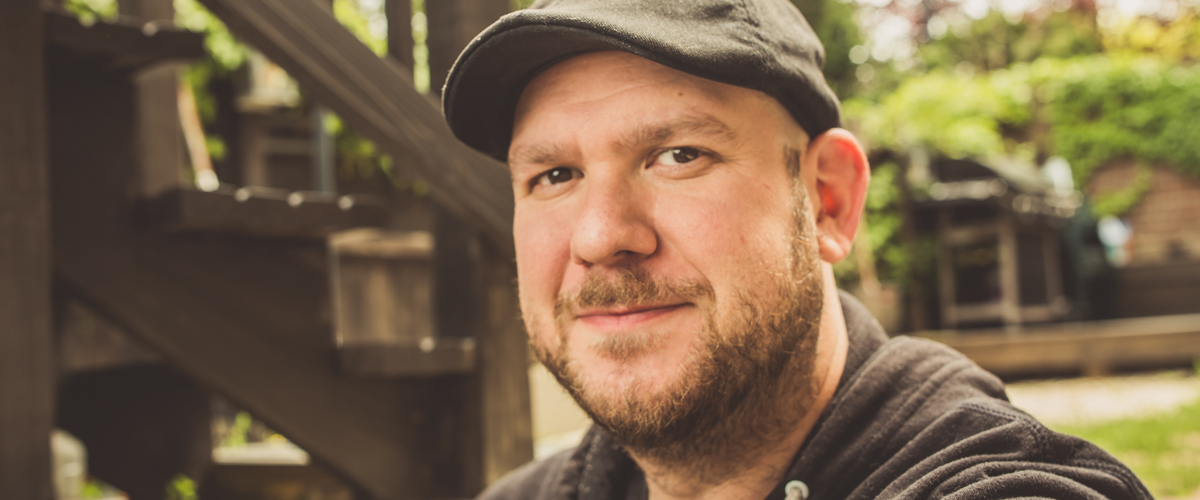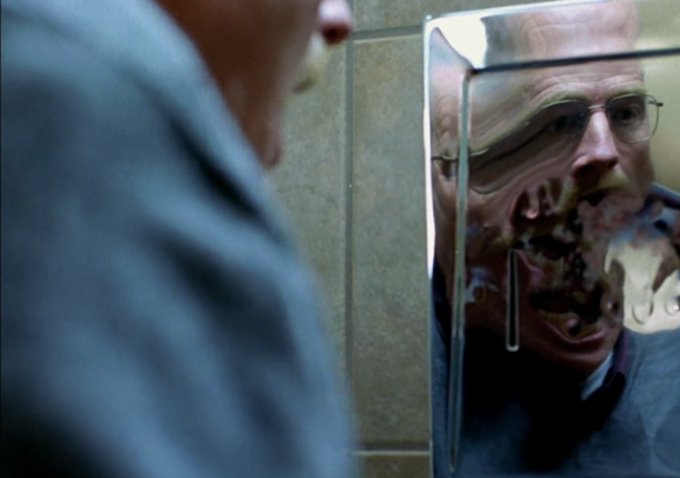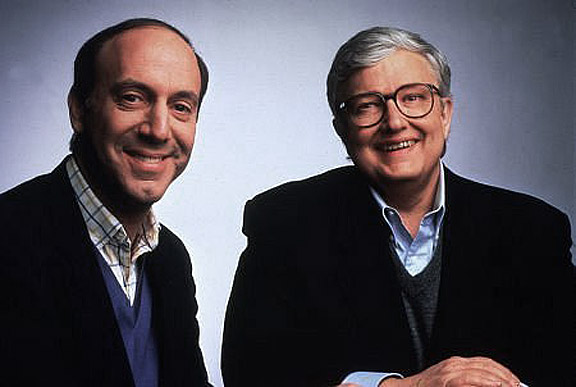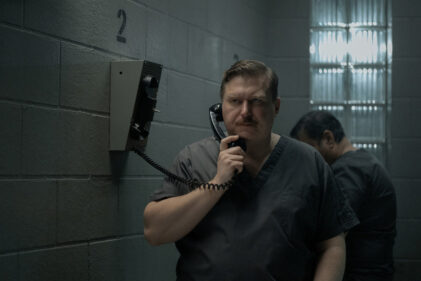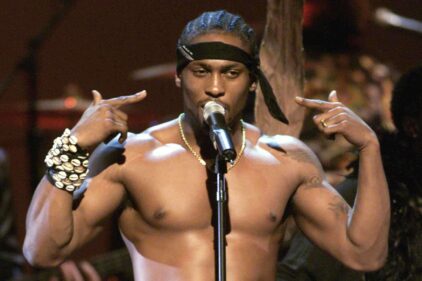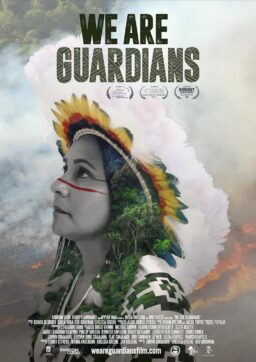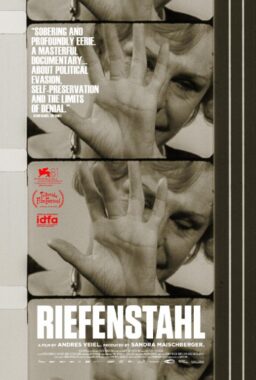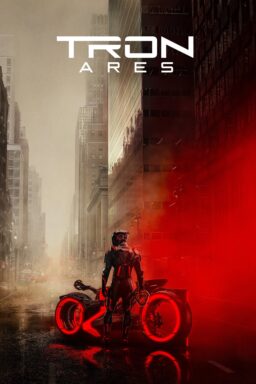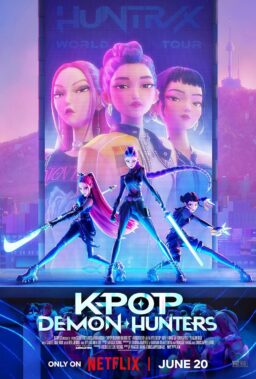[Editor’s note: Last year, RogerEbert.com contributor Dave Bunting began editing a series of video essays that arrange images from seasons of “Breaking Bad” in ways that highlight the show’s motifs, colors and textures. His latest piece, about the cinematography of Season 2, is embedded below. Bunting previously published videos about Season 3, Season 4, and the first half of Season 5 at Press Play, and is finishing the series as a coproduction between that site and RogerEbert.com. You can also find the below video about Season 2 at Press Play, with an accompanying essay by Arielle Bernstein. Bunting’s video on Season 1 will be published here next week; his concluding video, about the second half of Season 5, will run after the series finale.
Last week Bunting interviewed the show’s director of photography, Michael Slovis. A transcript follows the video.]
DAVE BUNTING: “Breaking Bad” is clearly not your typical television show, for a number of reasons. Obviously you’ve been given a lot of freedom to take visual risks, which is one of the things that sets the show apart. How do you feel that your approach to certain types of heavily stylized shots, like the point-of-view shots or the time lapse shots, help to tell the story?
MICHAEL SLOVIS: Well, that’s a great question. Unfortunately, you’ve asked, like six questions in that one question. It really covers a lot of what interests me as a filmmaker.
Let me start with the beginning, and you made a very true statement in the preface to your question, which was that I’ve been given a lot of freedom. I have been given and extraordinary amount of freedom, never before seen by me in television, and very rarely given to anybody. When I was first asked to do the show, I saw the pilot and the following six [episodes], and I was so blown away by the content that I said, “This is, like, the best thing I have ever seen, and I believe it deserves a very dynamic, strong, involving look, one that evolves with the story.” In that first season, there’s a lot extraordinary stuff going on. But I told them, “I’m not interested if you’re not interested in the look,” because I had just been traveling for many years, I had just come home and I really wanted to stay home in the New York area, and this was going to be taking me out to Albuquerque. It was really my wife who said, “You’re going to go do this show, just make a deal and go do it.” Because she had seen it, and just said, “This is what you’ve been waiting for.”
And she was right. And [AMC] said, “Yes, yes, yes: we’re filmmakers, too!” And you have to understand that at that point [in 2009], AMC was nascent. It was an embryo of a network, not what it is now. It had one original program going on, “Mad Men,” and they were just starting to build their brand. Nobody even knew where on the dial, or on the guide, to find them. So, they said, “We know what we’re asking; we’re filmmakers, and we want you to do this.”
When I spoke to Vince [Gilligan], I had the same conversation, and he said, flat-out, “Michael, I’m going to give you the ball, and I’m going to support you, and I really want you to run with it, and I don’t want you to hold back.” And, I’ve heard that many times before in television when the truth is that they don’t want you to pain with a bold brush. They don’t want chiaroscuro, they don’t want darkness, and if ever there was a story that demanded it, this was it.
And not only that, but Dave, the problem is that you can do great look, you can do very dramatic lighting, but if the story and the performances don’t support it, then all you’re staring at is dark or dramatic or contrasty lighting, and it’s not integrated. When people do notice the look of the show, I never want them to say it stands out. I always want it to be subservient to the story and the performances.
So I shot this as if it was a movie in the 1960s or ’70s, where all of the color was burned in. We did not do things that could be fixed later on, and we did not widen frames so they could be adjusted later on. Everything was very intentional, everything was very much decided by the directors and Vince and myself on the day. So, the show was shot with a certain intent, and then it was also finished with a certain intent. And I was able to carry through all the way through to the coloring of the final shows. That’s why, whether you like the look of the show or not, it has a feeling of continuity and organic-ness to it.
Now, when it comes to telling the story—the visual language—the boundaries were all pulled off, and they were very much pulled off in the first season by the directors, like Vince Gilligan who did the pilot, and Adam Bernstein who did the following two episodes. So, there were a lot of things that were in the script, but what I did was take them a step further and started introducing them into what might be normal…or scenes that might not have had those things before. It became so iconic to the show that people wanted to use them all the time, and I’m a big believer, as is Vince, that you shouldn’t use them all the time because they lose their power, so I would actually try to talk directors out of using them in favor of using them more judiciously, and at points where maybe you would least expect it, or needed it the most, or what have you.
The truth of the matter is that Vince asked us to try to find the truth in the scenes in organically structured shots that would fit in with the language of the show.
That makes a lot of sense to me. I think you make a good point about not wanting to have style over substance, and opting instead to use the stylistic elements sparingly so that the material can shine on its own, but be occasionally augmented by some of the trickier shots, like the POVs and stuff like that…
Supported. Supported. And you know, Vince has this analogy of an ice cream sundae: A great ice cream sundae is maybe a scoop of vanilla with some nuts and chocolate and some whipped cream on it, not a scoop of vanilla that’s buried in nuts and maple syrup and chocolate and marshmallows and pineapples and peaches and cherries and whipped cream and nuts to the point where you’ve lost the idea that it’s a sundae.
I believe there’s a certain simplicity and elegance—and if you really look at the shots in “Breaking Bad,” they’re like simple black dresses. They really are not complicated. They’re just properly placed, and the camera is often times really just in the right place to tell the story, that’s all.
“THE WHITE NOISE OF THE SHOW”

I noticed in rewatching the series—which I’ve done a few times at this point—that when you came on in Season 2, you instantly brought a sort of trademark visual flair to the show, and it was noticeably different from the look of Season 1.
Well, you know, it’s the type of thing that not even studio executives necessarily notice, you know what I mean? It’ s not something that people tend to notice, so I’m very appreciative when people do.
Well, I’ve done a few video essays that are actually sort of compilations of some of what I think are the best shots throughout each season, and one thing I noticed was that in Season 2, when you came on, especially compared to later seasons (Season 3 onward), a lot of the camera work seems to have a more handheld quality to it, whereas those later seasons seems to be a bit smoother, utilizing dolly shots and presumably Steadicams.
Was that an intentional choice, to sort of transition from the original look of Season 1 to what you knew you were going to be doing down the line? Or was it more a matter of just jumping in and later on realizing you wanted to do more dolly shots, for example, or more Steadicam stuff?
Steadicam was verboten. Vince had a rule against Steadicam, so I don’t think they ever used it in the first season. But I thought it had a place. Now, in classic filmmaking, the camera’s on a dolly, and if you want to make a point of something, you go handheld…or you go on Steadicam, and then you have a different texture, a different brush you’re painting with.
When I came on, the handheld [camera] became the white noise for the show, so whenever we wanted to make a point—and this is what I sort of, well, not convinced Vince of, but I proposed, and he was receptive to—that because you’re handheld, you now have the power to put the camera on a tripod or on a dolly or on a Steadicam when you want to make a textural difference.
And now, the handheld becomes the white noise, the established palette or way of looking at things, and then you can veer off of that and make a point in other directions. There’s a couple times in that season where we just plopped the camera down and made it static, and man, it just jars you. So, it came to be that our standard canvas was handheld, but whenever we wanted to make emotional or story points, we might veer off. And Vince embraced that 100%.
One of the interesting things to me has always been reconciling the production side of things with the creative side of things, and again, you were given a lot of freedom to take risks and try different things out. Can you describe the process of bringing a conceptual idea for a certain kind of shot, like a POV, into reality?
I’m asking both from a production standpoint and a technical one. In other words, who do you typically bounce ideas off of when you’re planning the more stylized shots? And beyond that, how do you actually go about technically accomplishing them?
I was given a lot of freedom, but because I am a collaborator, and because film is a collaborative art and I was brought up through it in that way, I never made decisions that were my own—I mean, I would make cases, but if there was anything that was really going to impact the show on a more global level, out of courtesy and politeness and respect I would run it by Vince. But I did not have to do that on an episode-by-episode basis; that was more sort of seasonal, or global. But, the process was that directors would come in, they would start to prep—now, a lot of this stuff is in the scripts, so if you read the scripts there are lots of points of view that were scripted, and that was the beginning point in terms of a call and response, to use a jazz metaphor, that the directors would start to riff on. And that’s where we would start to work on these things.
But we were not limited to that, so if we thought it was appropriate, we might go back and say, “You know what? Let’s go back and try this in another place.” And if we had an idea for doing it somewhere when it wasn’t written, we were very much able to pitch that. Then we would work together to plan it out.
We did not have a lot of money; the show was made really on a shoestring budget. Everything that we had went onto the screen, and this crew was incredible in terms of watching our pennies and nickels, and I am always very responsible to production, so we would look for ways to do it cost-effectively, but just as packed with emotion, as though we had all the money in the world. And it would be a collaboration between the director and myself. When we were through the second year, then all of a sudden directors were coming [in] all excited about pitching all kinds of wacky angles, and pulling the backs off of freezers and washing machines and vacuums and this and that. Attaching cameras to anything we could find.
My background at “CSI” was actually a good foundation for this. It was also very much a visual playground. What we tended to do at “Breaking Bad” was to integrate it more organically into the story.
“I VERY MUCH STAYED OUT OF THEIR RICE BOWL”

Last night I attended a screening of a couple of Bryan Cranston’s favorite episodes at Lincoln Center, with a Q&A with him afterwards. One of the episodes was Season 3’s bottle episode, “Fly.” One thing that struck me rewatching it was how exciting the episode is visually, even though the only heavily stylized shots were the macro of the fly at the beginning and the slow motion of the fly falling after Jesse kills it. Can you speak a bit about how you prepare for the challenges of keeping an episode visually enticing when you’re shooting in just one location, like the superlab?
I have the advantage of having designed the superlab. Now, the one person whose name, tragically, in all of the press, all of the accolades, all of the recognition, that gets left out the most—the biggest tragedy in all of this, because all of the writers get recognized and of course the actors—is a gentleman named Mark Freeborn, who is our production designer. And Mark Freeborn is a genius. He is so super-talented, I cannot tell you. When I tell people that Jesse’s apartment was a set, that the interior of Pollos Hermanos was a set, no one believes me. He just did the most spectacular work. It was so easy. And when we did the superlab, I knew we were going to be in there a lot. We were spending a lot of money on that set, so therefore we were going to shoot it a lot, and so we integrated the lighting into it on a conceptual level so that I was totally flexible with it later on, and that made all the difference in the world. That was everything.
I pitched to Vince that I would have a lighting scheme for cooking, a scheme for maintenance, a scheme for post-cooking…so I had all these different approaches to the lighting that were already built into where we were in terms of the time of day or night. And since it didn’t matter, since there were no windows, I could implement those looks whenever I wanted to.
It’s interesting that you bring that up, because I’ve read other interviews with you where you mention that outside of the lab, you really like using, or at least mimicking, natural light. Not being afraid to play with shadow, light and dark, and having things look the way they do in real life. You said, basically, you know who these characters are. You know who it is if you see a pork pie hat in silhouette…
Exactly! You see a 5’10” bald man, you know who that is.
It’s probably not Dean Norris.
[Laughter] This comes directly from Vince: [Vince Gilligan impersonation] “I don’t wanna see their faces all the time.”
Your impersonation of him is exactly like Bryan Cranston’s. He was doing it last night.
No competition. Mine’s way better than Bryan’s, don’t you say that! [Laughter]
Going back to the light thing, I’ve noticed that a lot of the cooking scenes, especially in season 5, have an almost hyperreal quality to them, in that everything is very well-lit and crystal clear, whereas in other scenes, natural light and more shallow depths of field seem to be more the norm. Can you tell me a bit about that distinction?
That’s intentional, absolutely. If you look at the cooking scenes, the light is all over the machinery, and it’s bouncing up. We had these very hot lights shining down and hitting all of that stainless steel. The light would bounce around, and nine times out of ten I didn’t have to do anything in there. I really didn’t. All I had to do was focus the lights onto the machinery and shoot the shot.
We moved very fast in the superlab. It was all built-in. I had roof panels that could lift up if I wanted to get a backlight in somewhere, but for the most part, we just shot it exactly the way it was. All the lights you see in the ceiling when we go real wide, well those were the practical lights in the shot, and they were the lights we used to shoot the set.
So, you killed two birds with one stone. It makes sense that a lab would have high-powered lighting, especially one that supposedly spared no expense, at least according to the story. They’re working with dangerous chemicals, they have to see what they’re doing…
If you go into pharmaceutical labs, that’s what they look like. Imagine when you’ve gone into, say, a brewery and they light up the big copper kettles. Same thing.
And they look awesome when they do that.
It looks awesome! Exactly right! That’s why I did it.
You’ve directed a handful of episodes, as well…
Four of them.
Four, that’s right. One for each of the past four seasons. What’s it like to switch into that role and back again? Do you find yourself wearing both hats? I would imagine, and correct me if I’m wrong, but because it’s such a collaborative atmosphere, it’s probably not that big a deal for you to sort of nudge whoever’s DPing the episode…
I very much stayed out of their rice bowl, although all of them came in—and not from anything I would say or do—a little intimidated. And I would have to push them further because they were all fans of the show or respectful of the show. But I really stayed out of it. The joy for me in directing there was the embracing of my cast and Vince and the writers. It was the most wonderful place in the world to direct. You feel like you’re protected by your family. And they trusted me, because I directed a bunch of reshoots during the second season, my first season there. They broke me in slowly to the directing, because they didn’t know my directing. So they knew me, and they trusted me. When you’re a DP on a show like this, and you have a guest director come in, really the actors will come up to you and go, “How was that? How’d I do?” You know what I mean? So there’s already a bond, there’s a foundation built, there’s a trust.
Sounds very gratifying.
Oh, I can’t even tell you. I can’t even…I miss it so much.
“THE BEST EFFECTS ARE THE ONES YOU DON’T NOTICE”

When did you actually wrap production?
March. I went to screening the other night at Lincoln Center, and everybody was there, and it was just a huge cryfest. We just adored each other.
What would you say is the most technically challenging shot you’ve had to get? Was there ever something you just kept trying and trying and couldn’t quite get there?
I’m a very simple cameraman, in spite of the fact that sometimes it looks complicated. The shot of Gus walking out after the explosion at the end of Season 4…Vince had a very specific idea of what it was that he wanted. Although it was not very technically complicated, it took a while for us to get it so that it matched exactly what he had in his head. But it wasn’t difficult, it was just such an important and iconic shot to him. He wanted it to be very much in the way that he saw it, and I respect that. And we did that.
Absolutely. And thank God, because it ended up being one of the most memorable tableaus from entire series, with Gus straightening his tie while we get to see all of his remaining facial viscera. How was that shot? Was Giancarlo [Esposito] wearing green paint on his face?
Yes. They painted away the sections of his face with green and they put tracking marks on him.
That’s one of the only things I can remember from the show where an effect was added in post…
Oh, there’s bunches. Bill Powloski, our post supervisor, is such a genius, and you just paid him the greatest compliment. He’s the kind of guy that would be thrilled to hear you say that, because he feels that the best effects are the ones you don’t notice.
Absolutely. Last thing you want is Jar Jar Binks.
Yes! And he did a lot of getting rid of things, painting things out. Adding extensions. That big warehouse in Season 5, when Aaron goes in to look for the methlamine? He did extensions on those so the warehouse we shot in was made to look twice as long. Things like that he would do so beautifully, you just never, ever would know.
I love hearing that, because the show is very organic looking. It’s not flashy with too many effects…
Let me tell you something. Do you remember the episode I directed [“Live Free or Die”] in Season 5 with the giant magnet?
Yeah, of course.
The entire car sequence after the magnet scene, after they drive away from the police station, is green screened. And Bill Powloski did that. They wanted me to shoot it practical, and I said, “No, it’s about performance. We should do it green screen.”
Wow. I would never guess.
Look at it again, you will not believe it. There is not one thing in there that is out of place. Oh! I can tell you exactly what the most technically complicated shot was, actually it just came to me. I didn’t remember it because I was the director: It was all that stuff in that room flying off of shelves, the biggest, widest shot of that in the magnet episode. There were wires pulling everything, and they all had to be painted out by hand.
Oh my God.
Yup.
That sounds like such a hassle!
Yup! I mean, it was not a difficult shot to shoot, but it was difficult from the point we shot it to it arriving on screen. Extremely difficult.
Well, it was used to great effect. I just figured you went out and got the magnet, but that obviously wouldn’t be practical, given all the equipment you need to actually shoot the episode.
It was incredibly complicated.
That’s pretty cool. Have there ever been any shots that you were really proud of that ended up on the cutting room floor?
You know what? We didn’t waste too much. We shot film, and it was so expensive that we didn’t have a lot of waste. So, if we shot a lot it was because we were trying to get it right, not because we wanted to get additional coverage. In fact, we never did “too much coverage.”
Well you mentioned earlier what an efficient set it was.
Yeah. We were budgeted for 11,000 feet of film a day, sometimes we’d go a little over, sometimes a bit under. But we were budgeted, and we did not have a lot of money on that show. Most people would flip out as to how little we spent on that show. People never guess, and they think it’s a lot more. It was not.
Do you always shoot film?
That’s a financial and budgetary decision. I’ve shot a lot of film, but I’ve also shot some digital. They both have their advantages and disadvantages. But “Breaking Bad” deserved to be on film, on motion picture film, it really did. And the reason for that was that there was nothing unintentional about it. “Breaking Bad” has a feeling of intent, and a feeling that nothing is arbitrary. Because the budget was so tight—and I hate to get back to that—the budget was so tight, you really had to plan on what it was that you were going to see. So you had to really think it out. It’s not the type of show where you shoot a lot and then edit it into something later.
Well, I think it’s important to discuss budget, and the reason I say that is that I think your average television viewer, even people who have a good television vocabulary, aren’t necesarily thinking about production constraints, like budget. They figure, “Ah, it’s TV, they can just throw money at it until it’s right.” But I actually like the idea of tight budgets, because necessity is the mother of invention, and knowing you’ve got these constraints…it’s like how Mozart had to write within the confines of the rules of 18th Century counterpoint. It’s a very similar notion: those constraints give way to creativity.
I think that’s absolutely true. When we had stories to tell, sometimes the stories were so complicated and they expected so much of us that the only way to really come up with something interesting…a lot of those interesting shots were the result of a budget limitation.
Yeah. I can only imagine. Well, that’s all I’ve got for you; I could honestly sit here and talk to you all night. But, let me thank you for your time and for sharing your unique vision with all of us in television viewership land.
Let me tell you something: the honor was one hundred percent mine. And the thrill was mine. It just doesn’t happen that often in a filmmaker’s lifetime, and I’m just awfully glad that it happened to me. I’m so appreciative of it, you have no idea. And many people will go through their careers never having had a “Breaking Bad” in their lives, and I was lucky enough to have a couple, so I feel great.
Well, I think we’re all glad it was you, and I can’t wait to see these last 8 episodes.
All I can tell you is…two things: A) You will not be disappointed, I promise. I promise, I promise, I promise. B) Every single storyline will be buttoned up, and there will be no loose ends. It’s going to redefine last seasons of television. It’s going to redefine series finales, which are almost inevitably disappointing. This one will not disappoint.
That is a very tall statement, and I don’t think I’d believe from anybody but someone who’s worked on this show.
I’ve seen all eight episodes. I’ve seen it through to the end, and I sat in front of my screen crying, myself, alone, during the last couple of episodes, and I’m telling you…well, call me afterwards. Call me in September, let me know what you think.
